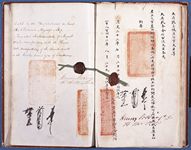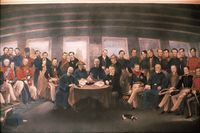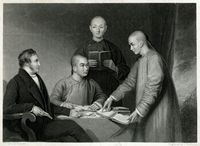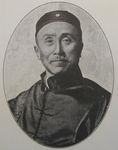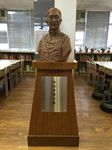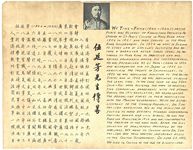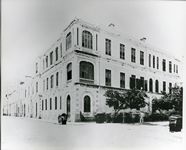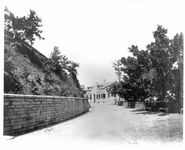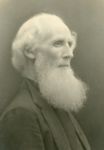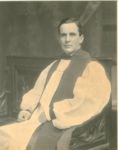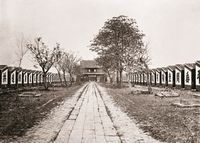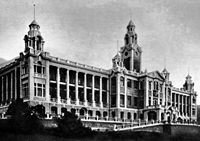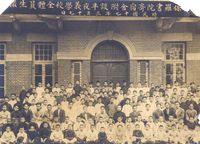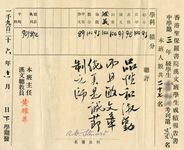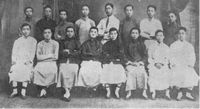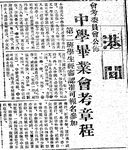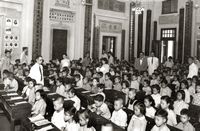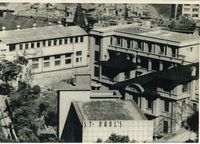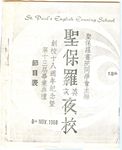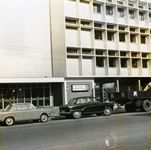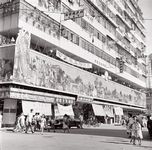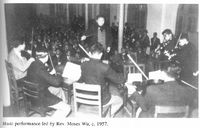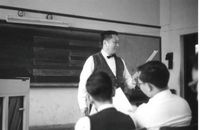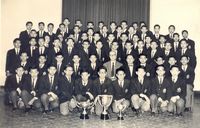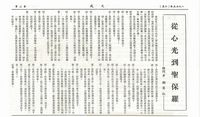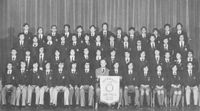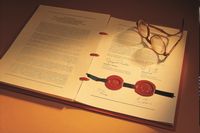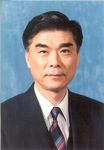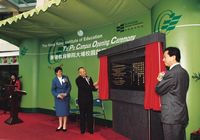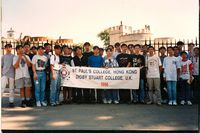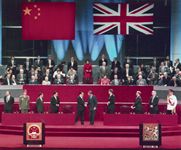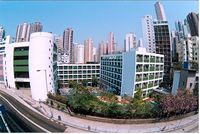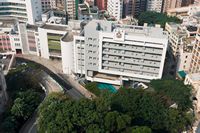3D model of St. Paul’s College campus in Glenealy from 1851-1941, now known as Bishop��’s House
3D model of St. Paul’s College campus in Bonham Road in 1950s
The Evolution of St. Paul’s College Alongside the Development of Education in Hong Kong
Timeline: 1841 - 1861
Milestones in the Development of Education in Hong Kong
The Dominance of Traditional Education: During this period, education in Hong Kong was still predominated by traditional Chinese schools and Western religious bodies.
History of St. Paul’s College
Hong Kong Roots: St. Paul’s College was established for missionary work and talent cultivation. Its earliest students included , , and other members of the Chinese elite.
1841 The British occupied Hong Kong Island, cited in the Treaty of Nanking signed by Britain and China in 1842
The First Opium War, from 1840 to 1842, ended with the British defeat of Qing troops and the signing of the Treaty of Nanking (Nanjing), which ceded Hong Kong Island to Britain.
1842 Western religious bodies came to Hong Kong to establish schools
Religious bodies that came to Hong Kong to set up schools included Morrison Education Society, Baptist Convention, London Missionary Society, American Congregational Church, Anglican Church, Roman Catholic Church, etc. The churches preached and trained local clergymen by running mission schools. With the support of the Hong Kong Government, mission schools developed rapidly.
1843 Anglican clergymen arrived in Hong Kong
The Church of England appointed the Revd Vincent Stanton to Hong Kong. He used funds raised in Britain to establish an Anglo-Chinese school for the Chinese population, hoping that graduates would join the clergy or contribute in other ways to society. In 1845, he was granted a plot of land by the government (now known as Glenealy, or Tit Kong) to build St. Paul’s College. The first College building was erected in 1847, and classes began in 1849.
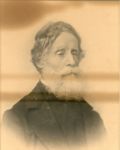
The Revd Vincent Stanton (1817–1891).
(Credit: St. Paul’s College)

Letter to Lord Stanley, who was in charge of Hong Kong affairs, in 1843, proposing the establishment of an Anglo-Chinese school in Hong Kong.
(Credit: St. Paul’s College)
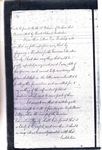
Letter to Lord Stanley, who was in charge of Hong Kong affairs, in 1843, proposing the establishment of an Anglo-Chinese school in Hong Kong.
(Credit: St. Paul’s College)
1847 The Education Committee was set up to oversee all traditional Chinese schools aided by the Government
The Education Committee advocated for English to be taught universally to promote understanding between the Chinese and foreign population, reduce friction, and facilitate British governance. By funding churches to run schools, the Government was able to grasp and oversee the provision of education on Hong Kong Island. In 1852, George Smith, the Anglican bishop of the Diocese of Victoria and Warden of St. Paul’s College, was appointed Chairman of the Committee.
1851 St. Paul’s College was officially founded, and assisted the Government in training interpreters
The school was officially established in 1851 as St. Paul’s College. In the same year, the Foreign Office permitted the Superintendent of British Trade in China to give the College an annual grant of $1,200 for training interpreters, with the condition that six students per year would be nominated as interpreters by the governor. As a result, began to refer prospective students to St. Paul’s College. Candidates were selected every six months through a series of examinations on subjects such as English, Bible Study, the Chinese Classics Four Books, Geography, etc. After each round of examinations, 7 to 13 students were selected, and a scholarship was awarded to the student with the highest score. This marked the beginning of public examinations in Hong Kong.
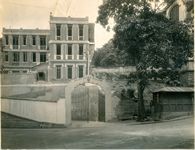
The St. Paul’s College campus and dormitory at Glenealy.
(Credit: St. Paul’s College)
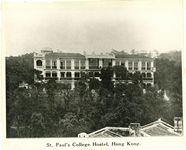
The St. Paul’s College campus and dormitory at Glenealy.
(Credit: St. Paul’s College)
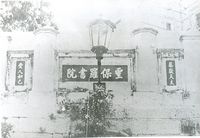
The plaque at Lower Albert Road, bearing the name of the College and its early motto, “Love the Lord with all your heart, and love your neighbour as yourself.”
(Credit: St. Paul’s College)
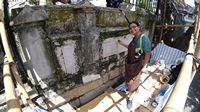
In celebration of its 170th anniversary, St. Paul’s College invited Dr Karen Fong Wai Yin, a parent and expert in heritage conservation and stone rubbing, to make rubbings of the plaque.
(Credit: St. Paul’s College)
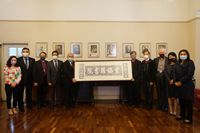
On 24 November 2021, St. Paul’s College sent the framed rubbing with the College name and the early motto of the College, “Love the Lord with all your heart, and love your neighbour as yourself.” as gifts to Bishop’s House (the founding premises of St. Paul’s College). The rubbing was presented by Dr Arnold Cheng Cheuk Sang, Chairman of the College Council, and his team on behalf of St. Paul’s College. They were accepted by the Most Revd Andrew Chan and Provincial Archivist, the Revd Dr Philip L. Wickeri. The rubbing was later transferred to the Hong Kong Sheng Kung Hui Archives (HKSKH Archives) for storage.
(Credit: St. Paul’s College)
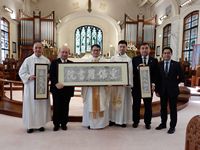
St. Paul’s College presented the rubbings as gifts to St. Paul’s Church on 29 January 2023 during the service commemorating the Feast of the Conversion of Saint Paul to mark the long relationship between the College and the Church by Dr Cheng Cheuk Sang, Chairman of the School Council, Mr Mok Yu Sang, Hon. Treasurer of the School Council, Mr Dennis Yuen Dick Yan, Principal, and Mr Mak Chi Ho, the Headmaster of St. Paul College Primary School. The Revd Canon Dr Thomas Pang Pui Kong, Vicar of St. Paul's Church, accepted the rubbings on behalf of the Church.
(Credit: St. Paul’s College)
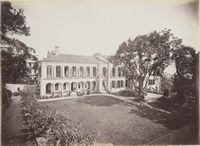
Bishop’s House, photographed in 1849, which was the campus of St. Paul’s College from 1851 to 1950.
(Credit: HKSKH Archives)
1853 St. Paul’s College pioneered teacher training in Hong Kong
As early as 1850, some government school teachers were transferred to St. Paul’s College, where they received teacher training. In 1853, two St. Paul’s students were assigned to teach English at government schools in Central District and Wong Nai Chung.
1860 The Education Committee was reformed, emphasising English language education
The Education Committee was restructured by the Government to become the Board of Education. James Legge, Vice-Chairman of the Board, began to focus on teaching English as a means of encouraging the Chinese population to engage in business and trade, and to facilitate commercial trade between China and the West. In July of the same year, Legge initiated a reform scheme, which proposed the closure of all Government schools in Victoria City. Students from these schools were subsequently transferred to the newly established Government Central School, where English was the primary language of instruction.
1860 The British forcibly occupied the Kowloon Peninsula
In 1860, Britain and China signed the Convention of Peking. The Qing Government was forced to cede the Kowloon Peninsula south of Boundary Street to Britain.
1861 Wu Ting Fang graduated from St. Paul’s College
On the recommendation of the chaplain from a mission school in Guangzhou, Wu Ting Fang came to Hong Kong in 1856 to attend St. Paul’s College. He graduated in 1861. Wu later became the first Chinese barrister in Hong Kong; he also served as the first Chinese non-official member of the Legislative Council of Hong Kong as well as Acting Police Magistrate.
Timeline: 1862 - 1904
Milestones in the Development of Education in Hong Kong
Responding to Community Needs: During this period, the Government established the Government Central School, Education Department, and Grants-in-aid Scheme. It also introduced entrance examinations for British universities.
History of St. Paul’s College
The Rise to Prominence: The College nurtured a wealth of Chinese talents, including , , and .
1862 The Government Central School was established
The Government Central School was located in Gough Street in Central District. Frederick Stewart was its first headmaster. The school provided Western-style primary and secondary education. The Government Central School had both a Chinese Section and an English Section. Students under the English Section studied English, Geography, Arithmetic, History, the Five Classics, and the Records of the Grand Historian. Students under the Chinese Section studied The Analects of Confucius, Mencius, and the Doctrine of the Mean; they were required to pass an oral examination on Chinese Classics before being admitted to the English Section. In 1889, the new campus at the junction of Aberdeen Street and Hollywood Road in Central District opened, and the school was renamed Victoria College. It was officially renamed Queen’s College in 1894.
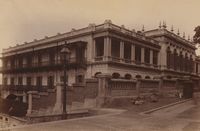
The Government Central School was renamed Victoria College after moving to Hollywood Road in 1889. It was officially renamed Queen’s College in 1894.
(Credit: Public Records Office, Government Records Service)
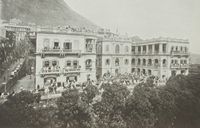
The campus of Victoria College at the junction of Aberdeen Street and Hollywood Road in the Central District.
(Credit: The University of Hong Kong Libraries)
1865 Education Department was established
The Government established the Education Department to replace the Board of Education. Frederick Stewart was appointed the first Inspector of Schools and was in charge of educational matters in Hong Kong. This marked a milestone of the official integration of education into the public affairs of the Hong Kong Government.
1867 St. Paul’s College was forced to suspend operations
Hong Kong experienced its first financial crisis when Dent & Co., the foreign firm that St. Paul’s College’s Foundation had invested in, suddenly collapsed. The Hong Kong Government also stopped subsidising the College, following the British Government’s termination of public subsidies to the Church because of controversies on British soil over religion. This combination of events forced the College to close temporarily.
1868 St. Paul’s College reopened under the auspices of Church Missionary Society
Bishop Charles Richard Alford reopened the College under the auspices of Church Missionary Society. However, a lack of funds caused the College to temporarily shut down again the following year, and it did not reopen until 1875.
1873 The Grants-in-aid Scheme was implemented
The scheme stipulated that grants schools were required to offer four consecutive hours daily of secular instruction, within which religious instruction should be avoided.
1875 The St. Paul’s College Ordinance was passed by the Legislative Council of Hong Kong
After taking office, Bishop John Shaw Burdon reopened St. Paul’s College in January 1875. Whereas the College had previously only been a boarding school, it reopened as a hybrid day and boarding school. The College Ordinance was amended in the middle of the year to transfer the title of the College to the (Anglican) Archbishop of Canterbury, giving the latter the authority to re-establish regulations in conjunction with the College Warden and the British official in charge of Hong Kong affairs.
1876 St. Paul’s College joined the Grants-in-Aid Scheme
The College fell under Category 4 of the Scheme, i.e. as a school that taught a European curriculum in European languages, including Reading, Writing, Arithmetic, Grammar, History, Geography, etc.
1886 Entrance examinations for British universities were introduced in Hong Kong
Entrance examinations for the University of Cambridge and the University of Oxford were held in Hong Kong, giving Hong Kong students a pathway to be admitted to foreign higher education institutions
1898 The Convention between the United Kingdom and China, Respecting an Extension of Hong Kong Territory, was signed by the two countries
The Convention between the United Kingdom and China, Respecting an Extension of Hong Kong Territory, was signed. The convention enabled the United Kingdom to forcibly “lease” the area of land north of the Boundary Street in Kowloon up to the Shum Chun (Shenzhen) River, as well as 235 islets, for 99 years.
1901 St. Paul’s College restructured into a seminary
Bishop Joseph Charles Hoare restructured St. Paul’s College and suspended its Anglo-Chinese section, which had catered to Chinese students since 1849. The restructuring effectively turned the school into a seminary for only training Chinese clergymen, in collaboration with the Church Missionary Society.
Timeline: 1905 - 1942
Milestones in the Development of Education in Hong Kong
Heritage and Improvement: During the first part of the 20th century, education in Hong Kong developed in tandem with social progress. Some of the major milestones were the establishment of the University of Hong Kong, the promulgation of Education Ordinance 1913, and the commencement of Hong Kong School Certificate Examination (HKSCE).
History of St. Paul’s College
Growing with the Times: During this period, St. Paul’s College responded to the community’s clamour for re-establishment of Anglo-Chinese education. It nurtured many talents for Hong Kong, like , , and , and trained local cultural pioneers, including , , and . The College also ran free evening schools.
1905 China abolished the Civil Service Examination system (Keju)
Yuan Shikai, Prime Minister of the Imperial Cabinet of the Late Qing Dynasty, petitioned for abolition of the Civil Service Examination system (Keju). Empress Dowager Cixi finally issued a decree on 2 September 1905 in the name of Emperor Guangxu declaring, “From the beginning of 1906, all provincial and metropolitan examinations (Xiangshi and Huishi) shall be suspended. The Civil Service Examinations in all provinces shall also be suspended immediately”. The Civil Service Examination system, which had been in place for over a thousand years, was officially abolished.
1909 St. Paul’s College resumed Anglo-Chinese education
The Church Missionary Society decided to relocate the seminary to Guangzhou, while reintroducing Anglo-Chinese education to St. Paul’s College. The College adopted a new motto, “The fear of the Lord is the beginning of wisdom”. During this period, the College’s enrolment increased considerably. It also emphasised more on physical education. Between the 1910s and 1930s, the College underwent several expansions to build a church, a hostel, and playgrounds to cater for needs.

The motto of St. Paul’s College in 1909, “The fear of the Lord is the beginning of wisdom”, was taken from Proverbs 9:10 in the Bible.
(Credit: St. Paul’s College)
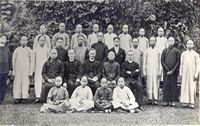
Students and teachers of St. Paul’s College in 1909.
(Credit: St. Paul’s College)
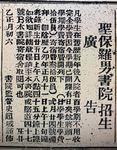
An admission advertisement for St Paul’s College in 1915 shows that the tuition fee was $15 for the spring term and $35 for boarding students.
(Credit: St. Paul’s College)
1912 The University of Hong Kong (HKU) was founded
The University of Hong Kong was officially opened on 11 March 1912. The teaching started in September to 71 male students. At the time, the University was composed only of the Faculty of Arts, the Faculty of Engineering and the Faculty of Medicine. HKU adopted the British system of education, and students were required to complete matriculation (or Class 1 in English schools) before they could sit for the HKU entrance examination.
1912 Modern schools emerged
With the establishment of Ministry of Education in the National Government of the Republic of China and the promulgation of the new academic structure, traditional Chinese private schools (Sishu) gradually phased out. Modern schools were characterised by a fixed daily schedule and classroom-based teaching. The academic curriculum consisted of subjects such as Chinese, Classics and History, Mathematics, English, Fine Arts, Music, Crafts, Physical Education, etc.
1913 The Education Ordinance 1913 was published
The Ordinance stipulated that all private and public schools in Hong Kong were subject to Government supervision. They were required to register with the Education Department and comply with all other regulations of the Ordinance.
1916 St. Paul’s College boarding students ran free evening schools
St. Paul’s students taught and ran free evening schools. In addition to the campus in Glenealy, these were also operated in Aberdeen, Tai Hang and other locations to serve children of underprivileged families.
1918 St. Paul’s College started issuing graduation certificates in Chinese
St. Paul’s College became the first English college in Hong Kong to issue graduation certificates in Chinese.
1921 HKU accepted female students for the first time
Rachel Irving, daughter of the then Director of Education Edward Alexander Irving, became the first female student admitted to HKU. She was given special permission to start as a Year 3 student. The second female student admitted to HKU was Irene Cheng, daughter of Sir Robert Ho Tung. Between 1921 and 1922, HKU had 300 students, of whom less than 2% were female.
1922 The National Government promulgated the Renxu School System
The system stipulated 6-year primary education and 6-year secondary education. Most of the Chinese schools in Hong Kong followed this school system.
1937 The Hong Kong School Certificate Examination (HKSCE) was first administered
In 1935, HKU began to administer the University of Hong Kong School Certificate Examination (HKUSCE). In 1937, the Education Department began to administer the Hong Kong School Certificate Examination (HKSCE) for students in Class 2 or their second year of senior secondary schooling. Those who passed HKSCE were awarded a certificate. However, students who wished to study at HKU were required to matriculate for one more year before they were permitted to sit for the HKU entrance examination.
1941 St. Paul’s teachers and students defended Hong Kong
Japanese forces invaded Hong Kong on 8 December, and classes at the College were suspended. Principal Evan George Stewart led St. Paul’s staff and students in defending Hong Kong by serving in the Hong Kong Volunteer Defence Corps (HKVDC) until the very end. During the Japanese occupation, some teachers and students also participated in Allied anti-Japanese underground operations in Hong Kong.
Timeline: 1945 - 1980
Milestones in the Development of Education in Hong Kong
Emphasis on Exam-based Selection: Number of students surged in the post-war era, leading to an education selection mechanism based on public examination results.
History of St. Paul’s College
Response to Social Demand: An evening school was established and additional buildings were built to accommodate more primary and secondary students. St. Paul’s College continued to nurture outstanding talents who served Hong Kong in the political, academic, business, medical, social welfare and performing arts sectors.
1945 St. Paul’s College temporarily merged with St. Paul’s Girls’ College to resume classes
After the Second World War, St. Paul’s College was amalgamated with St. Paul’s Girls’ College on MacDonnell Road to temporarily form a co-educational joint college, with elementary and secondary sections and kindergarten classes to meet the surge in demand for education in the post-war era.
1947 Hong Kong Schools Music Festival was proposed
Dr Herbert Wiseman, an examiner at the Royal College of Music, proposed the establishment of the Hong Kong Schools Music Festival, noting that ‘the competition would allow teachers and children to benefit from the constructive advice of experts’. He invited music inspectors to organise the Festival. Since then, each Director of Education had served as Director of the Festival, with the Principal Music Inspector serving as the Chairman.
1947 Schools faced difficulty in resuming teaching after the war, and many children were unable to attend school
The post-war period saw a massive influx of people from the mainland, leading to a surge in local population that included over 75,000 children of primary school age, approximately one third of whom were not attending school. Since most school buildings in Hong Kong were damaged in the Second World War, the number of school places available was inadequate to meet the rapidly increasing demand of school-age children.
1949 The Joint Primary 6 Examination was conducted
The Education Department administered the Examination for Primary 6 students who completed a 6-year Primary Course in Hong Kong. It was later replaced by the Secondary School Entrance Examination in 1962, which was abolished in 1978.
1950 Rooftop schools emerged
In post-war Hong Kong, many rooftop schools emerged in resettlement blocks. With the development of public housing, rooftop schools were slowly phased out and transformed into annex schools in public housing estates.
1950 St. Paul’s College reopened as a boys’ school
St. Paul’s College reopened as a boys’ school in September, after taking over the former site of HKU St John’s College on Bonham Road as its new campus.
1951 St. Paul’s English Evening School was established by the St. Paul’s College Alumni Association (SPCAA)
St. Paul’s English Evening School was established by SPCAA to offer opportunities to students requiring education in English. The evening school subsequently came under the management of St. Paul’s College and eventually ceased operation in the 2000s because of the broadening reach of education in Hong Kong.
1955 The Seven-Year Expansion Programme for Primary Education was published
The Government planned to build a large number of government schools and subsidised schools, aiming to nearly double the number of primary school students within 7 years. The Government also offered free land and interest-free loans to school-sponsoring bodies to encourage establishment and operation of schools.
1957 Adult education classes and evening secondary schools were offered on government school premises
The Government provided adult education classes across 27 government school premises, with 4,460 students enrolled. The first government junior secondary evening school was established on Hong Kong in October 1957. By 1965, adult evening secondary schools and 5-year secondary evening schools in Chinese and English had been established.
1960 St. Paul’s College Primary School (SPCPS) was established and the number of classes in the secondary section/division was increased
From the 1910s to the 1950s, St. Paul’s College only offered classes as low as Primary 5. In 1960, the primary classes expanded to a 6-year primary section, and became independent from the secondary section. In the same year, the secondary section of the College began to expand, with the number of Form 1 classes increasing from 2 to 6. Because of the lack of space on the existing school premises, the College underwent a redevelopment project from 1963 to 1969.
(The primary section originally shared the Bonham Road premises with the secondary section until 1992, when it moved to Hill Road; in 2013, it moved to its current site on Pok Fu Lam Road.)
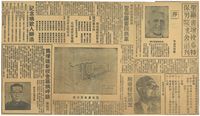
Newspaper clipping of ‘Special Fundraising Issue for St. Paul’s College Building Extension’, published in 1960.
(Credit: St. Paul’s College)
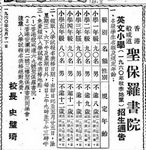
Admission Notice for St. Paul’s College Primary School, Bonham Road, Hong Kong (Open in Autumn 1960), Clipping from Overseas Chinese Daily News, 11 May 1960.
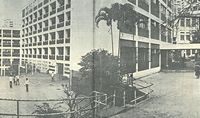
The SPCPS building on Bonham Road in the 1970s on the right-hand side of the photo.
(Credit: St. Paul’s College)
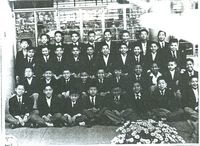
Primary Class 5B in Wong Ming Him Hall, 1956.
(Credit: St. Paul’s College)
1962 St. Paul’s College established various music groups and courses
Mr (later the Revd) Moses Wu helped establish a number of music groups and courses, including the Senior and Intermediate Choirs, the String Orchestra, and classes in violin, music theory, recorder, harmonica, etc., which have won numerous prizes at the Hong Kong Schools Music Festival and other competitions since the 1960s, and have since founded a musical tradition at the College.
1963 The Chinese University of Hong Kong was founded
1963 St. Paul’s College Students’ Association was established
The College’s Students’ Association was one of Hong Kong’s earlier secondary school student organisations, with the founding aims of promoting extracurricular activities, coordinating existing extracurricular groups, and lending students more autonomy in organising their own activities. Sixty years on, the SA has become an indispensable platform for student clubs. Affiliated clubs cover a wide range of interests, from philosophy to contract bridge; they offer opportunities for joint-school collaboration, encourage students to take their first steps into society, and are constantly inspiring their future paths.
1968 The College co-curated the Joint School Science Exhibition
Students from St. Paul’s College and 9 other secondary schools organised the first Joint School Science Exhibition to promote science education.
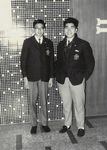
The co-founders of the Hong Kong Joint School Science Exhibition, Chan Yau Nam (class of 1967, left) and the first chairman, Law Sai Kit (class of 1967, right).
(Credit: St. Paul’s College)
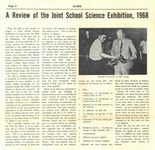
A report on the first Joint School Science Exhibition appeared in the College’s publication, Scope.
(Credit: St. Paul’s College)
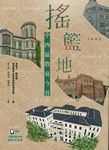
An interview with Dr Chan Yau-nam appeared in the book Cradle- Education Now and Then in the Central and Western District, published by the Hong Kong Museum of Education, The Education University of Hong Kong in 2020.
(Credit: Hong Kong Museum of Education)
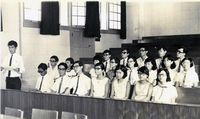
The Chairman of the 2nd Joint School Science Exhibition Preparation Committee, Law Sai To-to (class of 1968).
(Credit: St. Paul’s College)
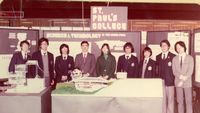
St. Paul’s College’s stall at the 1977 Joint School Science Exhibition.
(Credit: St. Paul’s College)
1970 Visually impaired students were admitted to St. Paul’s College
St. Paul’s College began to admit visually impaired students from Ebenezer School and Home for the Visually Impaired. As of 2011, a total of 46 students had been admitted. In 2007, the College pioneered inclusive education in Hong Kong by offering an internship for the first visually impaired teacher in Hong Kong.
1970 St. Paul’s College started admitting girls to its matriculation stream
In response to the under-supply of science matriculation stream at girls’ schools, St. Paul’s College began admitting girls.
1971 Free primary education and the Education Bill 1971 were implemented
The Government planned to roll out free primary education in all government, aided, and subsidised primary schools, benefiting over 500,000 students. The Education Bill 1971 was then implemented and stipulated that custodial parents were legally obligated to send their children to school.
1977 The Hong Kong Examinations Authority (HKEA) was established to administer public examinations
1978 Nine-year free education was introduced
In September 1978, the Government introduced 9-year free education, extending the scope of compulsory education to junior secondary education.
Timeline: 1980 - Present
Milestones in the Development of Education in Hong Kong
A Time of Changes: During this period, education in Hong Kong experienced a transition from the traditional model to a modern one, encouraging diversity and novelty.
History of St. Paul’s College
Pursuing Progress while Ensuring Stability: As in the past, St. Paul’s College has continued to achieve excellent results in public examinations and was transformed into a Direct Subsidy Scheme (DSS) school in the early 21st century.
1981 The first Junior Secondary Education Assessment (JSEA) was held
A total of 93,000 Secondary 3 students took part in the first JSEA, nearly 60% of whom were offered places at government or subsidised schools.
1984 Sino-British Joint Declaration was signed
In December 1984, China and the United Kingdom confirmed that sovereignty over Hong Kong would be transferred from the United Kingdom to China in 1997.
1985 The first Putonghua class was introduced at St. Paul’s College
In view of the signing of the Sino-British Joint Declaration, Principal Timothy Ha Wing Ho introduced the use of Putonghua in Chinese lessons at the College, pioneering the use of Putonghua in all secondary schools in Hong Kong.
1991 Direct Subsidy Scheme (DSS) was implemented
The Government’s Education Commission introduced DSS in 1988 and encouraged non-government secondary schools that had attained a high educational standard to join DSS to improve the quality of private school education in Hong Kong. DSS was introduced in the 1991–1992 school year to inject more variety into the private school sector. In the 2000–2001 school year, DSS was extended to primary schools.
1991 Post-secondary education began to expand
The Hong Kong University of Science and Technology was founded in 1991. Since 1994, former post-secondary institutions have been upgraded to The Hong Kong Polytechnic University, City University of Hong Kong, Hong Kong Baptist University, The Open University of Hong Kong, Lingnan University, Hong Kong Shue Yan Univeristy, etc.
1994 Five colleges of education were amalgamated to form The Hong Kong Institute of Education
Five colleges of education, namely Northcote College of Education, Grantham College of Education, Sir Robert Black College of Education, Hong Kong Technical Teacher’s College and Institute of Language in Education, were amalgamated in 1994 to form The Hong Kong Institute of Education (HKIEd). In 2016, the Institute was granted university title - The Education University of Hong Kong.
1995 St. Paul’s College’s first overseas study tour took place
St. Paul’s College started organising overseas study tours to broaden students’ horizons. In 2002, the College launched the Global Classroom programme, and expanded the scale of the study tour to involve all academic departments, with visits to the Chinese mainland, Europe, the United States, etc.
1997 Hong Kong reverted to Chinese sovereignty and became the Hong Kong Special Administrative Region of China
On 1 July 1997, Hong Kong reverted from British colonial rule to Chinese administration and became the Hong Kong Special Administrative Region.
2000 Education Reform in Hong Kong
In September 2000, the Education Commission published “Learning for Life, Learning through Life: Reform Proposals for the Education System in Hong Kong” and compiled a report titled “Learning to Learn – The Way Forward in Curriculum Development”. Since 2001, the Curriculum Development Council (CDC) has been implementing the “Learning to Learn” curriculum reform to promote the whole-person development of students and enhance their “learning to learn” ability, with the goal of achieving lifelong learning. A variety of education policies were developed under the reform, including the “through-train” mode, Education (Miscellaneous Amendments) Ordinance 2004, Education Voucher Scheme, and Hong Kong Diploma of Secondary Education Examination (HKDSE). The academic structure has also been changed to inlcude 3-year junior secondary education, 3-year senior secondary education, and 4-year university education.
2002 St. Paul’s College was converted to a DSS school
The secondary section of St. Paul’s College opted to become a DSS school, making the College one of the first schools to join DSS. The first DSS students enrolled in September 2002. The primary section of the College followed suit the next year.
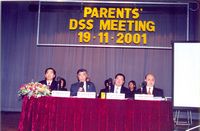
In November 2001, St. Paul’s College held a briefing for parents to address the details of the school’s plan to become a DSS school. Pictured from left: Mr Ching Wai Chuen, Principal Timothy Ha Wing-ho, Dr Chan Yau-nam, and Dr Arnold Cheng Cheuk Sang.
(Credit: St. Paul’s College)
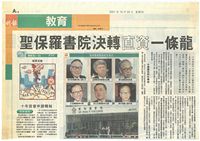
‘St. Paul’s College became a DSS through-train school’. Clipping from Ming Pao, 25 October 2001
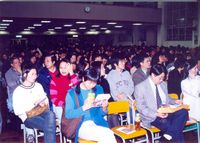
In November 2001, St Paul’s College held a briefing for parents to address the school’s plan to become a DSS school.
(Credit: St. Paul’s College)
2009 The New Academic Structure for Senior Secondary was implemented
Following the passage of Education (Miscellaneous Amendments) Ordinance 2004, the New Academic Struture for Senior Secondary was implemented in September 2009 with the abolition of matriculation and replacement of HKCEE and Hong Kong Advanced Level Examination (HKALE) with HKDSE.
2002–2010 The school underwent several improvement projects
The seventh floor of the East Wing was added in 2002 and the new South Wing was constructed in 2006 to replace the former Primary School Building. The College renovated the Wong Ming Him Hall in 2008 and the College Hall in 2010, adding computers and a rehearsal space to prepare the school for the educational needs of the 21st century.
2012 The first HKDSE was held
The first HKDSE, considered the graduation examination for 6-year secondary education students, was administered by the Hong Kong Examinations and Assessment Authority.
2012 The last batch of matriculation programme students graduated and the first batch of students took the HKDSE
With the termination of HKALE, St. Paul’s College ceased admitting girls and became an all-boys school.
2014 Education Reform: Implementation of the Ongoing Renewal of the School Curriculum
According to the analysis of CDC, curriculum reform in Hong Kong requires continuous improvement to “focus, deepen and sustain” the development of a whole-school curriculum, which includes a) students’ balanced physical and mental development; b) learning, teaching and assessment adapted to students’ learning needs; c) catering to learner diversity; d) aligning learning stages; and e) enhancing teachers’ professional capacity and building learning communities.
2018 St. Paul’s College launched the School Enhancement Project and provided a new pathway to higher education
St. Paul’s College announced a series of renovations and enhancements to update the campus and improve the teaching environment, which aligned with recent education reforms and upheld the tradition of focusing on off-campus learning to prepare for future challenges.
That same year, St. Paul’s College introduced the International Advanced Levels (IAL) programme to provide students with an alternative pathway to higher education.
Secondary Education Curriculum Guide (2017) and its Supplementary Notes (Published in June 2021)
The Education Bureau newly focused on curriculum development and moved to a new phase of ongoing curriculum renewal based on focusing, deepening and sustaining. The sustainable curriculum renewal included strengthening values education, reinforcing learning of Chinese history and Chinese culture, and promoting STEM and Information Technology Education (ITE). In 2021, the Education Bureau published the Supplementary Notes to the Secondary Education Curriculum Guide (2017) with the theme “Optimise the curriculum for the future, Foster whole-person development and diverse talents”. The Notes delineate the notion of “learning time” as opposed to “lesson time” and emphasise how to promote National Security Education to enable students to become good citizens who have a sense of national identity, show respect for the rule of law, and abide by the law.
Curators
Curatorial Team
Ms Kevinna DENG Ying-yu, Curator, Hong Kong Museum of Education, The Education University of Hong Kong
Ms Suky LIN Su-han, Assistant Curator, Hong Kong Museum of Education, The Education University of Hong Kong
Ms Maggie KO Yin-ching, Assistant Curator, Hong Kong Museum of Education, The Education University of Hong Kong
Ms Jenna YIU Yee-tung, Assistant Curator, Hong Kong Museum of Education, The Education University of Hong Kong
Acknowledgements
Advisors
Professor John LEE Chi-kin, Chair Professor of Curriculum and Instruction, Chairman of the Education Heritage Advisory Committee, The Education University of Hong Kong
Dr Sidney CHENG Po-ying, Librarian, The Education University of Hong Kong Library
Dr LEUNG Cho-nga, Guest Lecturer, Department of Social Sciences, The Education University of Hong Kong
St. Paul's College
Dr Cheng Cheuk Sang, Arnold, Chairman, St. Paul’s College Council
Mr Pong Yuen Sun, Louis, Supervisor, St. Paul’s College
Mr Yuen Dick Yan, Dennis, Principal, St. Paul’s College
Miss Wong Wai Sze, Flora, Assistant Vice Principal, St. Paul’s College
Miss Cheng Nga Tung, Apple, Teacher, St. Paul’s College
Miss Chan Hiu Yee, Joyce, Teacher, St. Paul’s College
Mr Lu Shung Chak, Bruce
Photo courtesy (In order of number of strokes of Chinese Character)
Mary Evans Picture Library
Mingpao
Tung Wah Museum
Public Records Office, Government Records Service
The University of Hong Kong Libraries
The Wong Cho Tong HKU Collection
Hong Kong Sheng Kung Hui Archives
Hong Kong Museum of History
St. Paul's College
Website Design
Mr Steven CHUI Wai-lung, Assistant Librarian, The Education University of Hong Kong Library
3D Model Design
Dr Richard WONG Tai-choi Lecturer, Department of Science and Environmental Studies, The Education University of Hong Kong
Dr Prudence LAU Leung-kwok, Assistant Professor, Department of Cultural and Creative Arts, The Education University of Hong Kong
Dr SONG Min-jeong, Assistant Professor, Department of Cultural and Creative Arts, The Education University of Hong Kong
Ms Odile MOK Wing-kiu, Research Assistant, Hong Kong Museum of Education, The Education University of Hong Kong
Others
Joyce CHAN Kwan-yiu
Jessie WONG Wing-kwan
